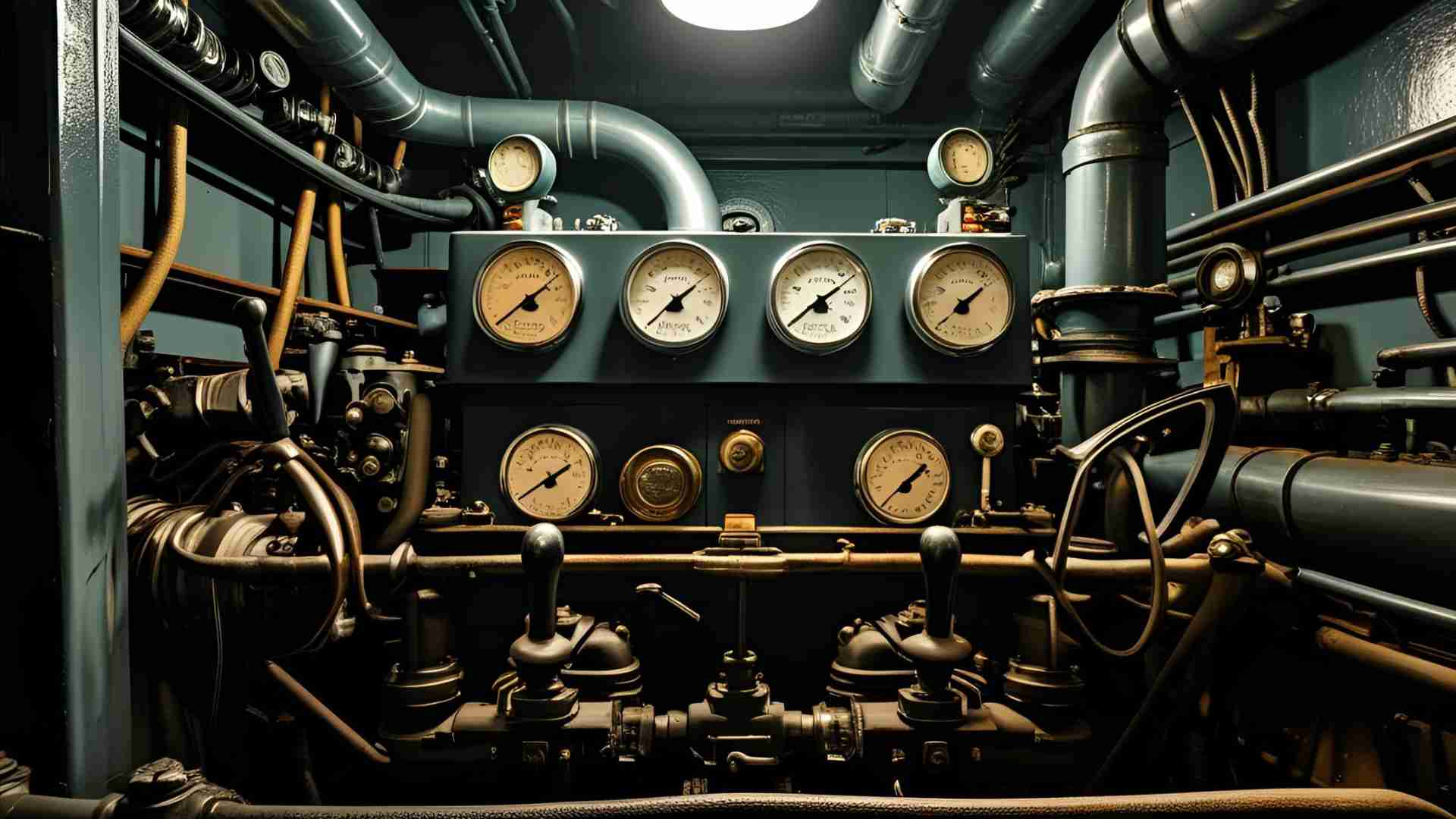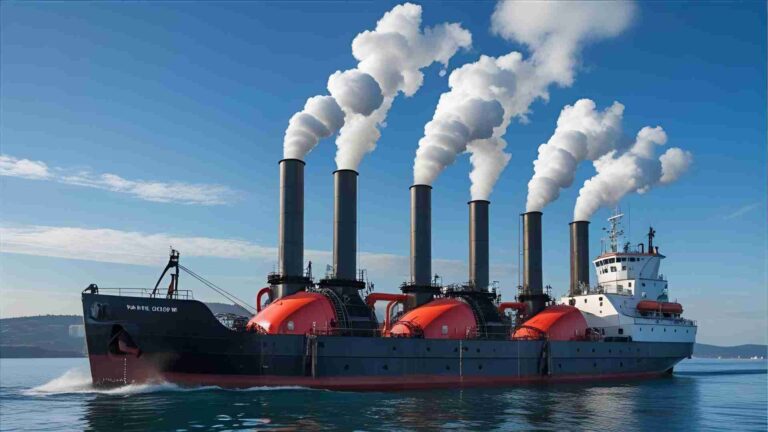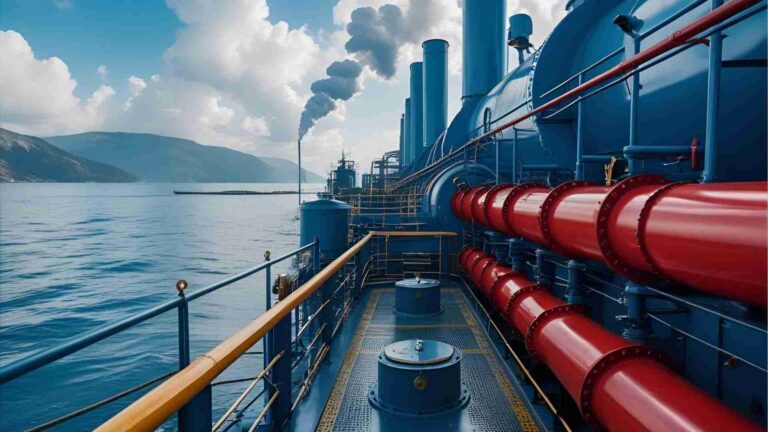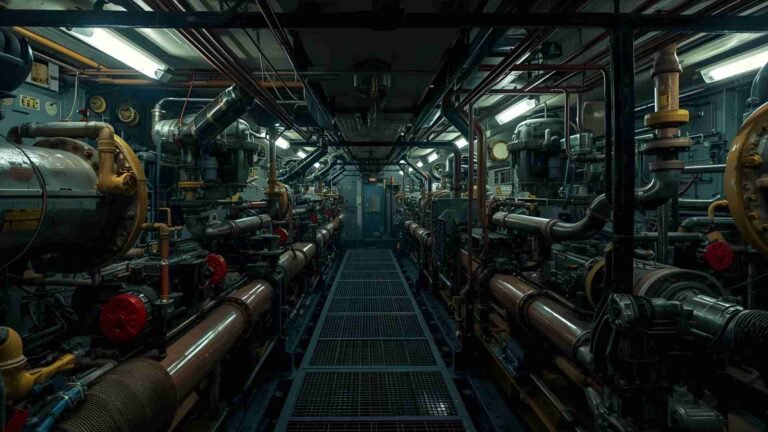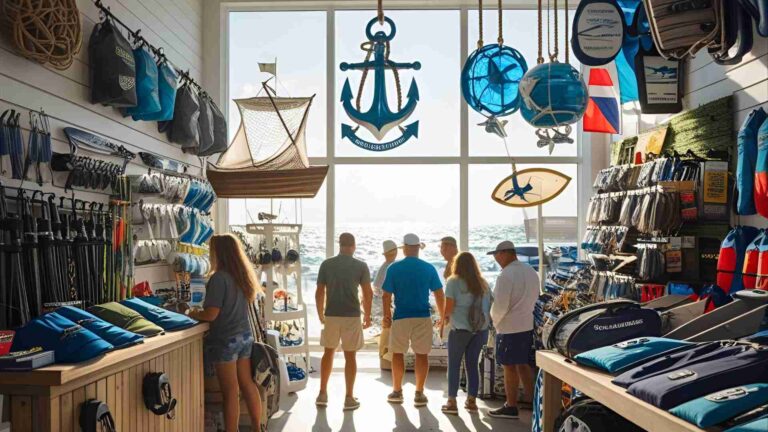Essential Instruments in a Ship’s Engine Room
Explore essential instruments in a ship’s engine room, their functions, and maintenance tools for safety and efficiency. A guide for maritime professionals.
The engine room is the heart of any ship, a complex hub of machinery and instruments that ensures propulsion, power generation, and operational efficiency. From massive container vessels to sleek cruise liners, the engine room houses critical systems that keep the ship moving, safe, and compliant with international maritime regulations. This article delves into the essential instruments and machinery found in a ship’s engine room, their functions, and the tools used for maintenance, offering a comprehensive guide for marine engineers, cadets, and maritime professionals.
The Engine Room: The Ship’s Powerhouse
Located typically at the aft or bottom of a vessel, the engine room is the largest mechanical compartment on board. Its strategic placement near the propeller optimizes cargo space and minimizes shaft line issues. On some vessels, such as diesel-electric ships, the engine room may be positioned forward or mid-ship. Regardless of location, the engine room is a multi-level space, often divided into top, middle, and bottom platforms, each housing specific equipment.
The engine room’s primary role is to house the propulsion system, auxiliary machinery, and monitoring instruments. These systems work in unison to ensure the ship operates efficiently, safely, and in compliance with regulations like SOLAS (Safety of Life at Sea) and MARPOL (Marine Pollution). Marine engineers, from the Chief Engineer to unlicensed crew, maintain and monitor these systems, ensuring smooth voyages.
Key Instruments in the Engine Room
The engine room is equipped with a suite of instruments designed to monitor and control critical systems. Below are the most vital instruments and their functions:
1. Pressure Gauges
Pressure gauges monitor fluid pressure in systems such as fuel lines, lubricating oil circuits, cooling water, and steam systems. Abnormal readings can indicate leaks, clogs, or pump failures. For example, low fuel pressure may signal a clogged filter, while high cooling water pressure could indicate a blockage. Regular monitoring ensures safe operation and prevents system failures.
2. Temperature Indicators and Pyrometers
Temperature monitoring is critical to prevent overheating, which can lead to catastrophic engine damage. Instruments include:
- Bimetallic Thermometers: Measure jacket cooling water and lubricating oil temperatures.
- Infrared Thermometers: Provide non-contact surface temperature readings.
- Pyrometers: Monitor turbocharger exhaust gas temperatures.
These tools ensure engines and heat exchangers operate within safe temperature ranges, optimizing performance and longevity.
3. Tachometers
Tachometers display the RPM (rotations per minute) of main and auxiliary engines. Maintaining optimal RPM ensures efficient propulsion and fuel consumption. For instance, a container ship’s main engine may operate at 80-100 RPM, while auxiliary engines run at higher speeds for power generation.
4. Flow Meters
Flow meters track the volume and velocity of fluids like fuel, oil, and cooling water. Accurate flow data helps engineers optimize fuel consumption and ensure adequate lubrication. For example, a fuel flow meter can detect inefficiencies in combustion, enabling adjustments to reduce costs and emissions.
5. Oil Mist Detectors
Oil mist detectors are critical safety devices that monitor crankcases for fine oil particles. High mist concentrations may indicate bearing failure, frictional heat, or the risk of a crankcase explosion. Early detection allows engineers to shut down the engine and prevent disasters.
6. Water Level Indicators
Installed in boilers and tanks, water level indicators prevent low-water conditions that could cause overheating or boiler explosions. These devices are essential for steam-driven systems and freshwater tanks, ensuring continuous operation.
7. Alarm and Monitoring Systems
Modern engine rooms feature integrated alarm systems that alert engineers to deviations from safe operating conditions, such as low lube oil pressure or high exhaust gas temperatures. These systems often feed data to the Engine Control Room (ECR) for real-time monitoring.
8. Engine Control Room (ECR) Displays
The ECR serves as the nerve center of the engine room, providing a digital interface for monitoring parameters across multiple systems. Engineers use ECR displays to make rapid decisions, adjust settings, and respond to alarms, ensuring operational efficiency.
Essential Machinery in the Engine Room
In addition to monitoring instruments, the engine room houses critical machinery that powers the ship. Below is an overview of key systems:
| Machinery | Function | Typical Specifications |
|---|---|---|
| Main Engine | Propels the ship via a propeller or thruster. | 10,000–100,000 kW, 80–150 RPM (e.g., MAN B&W engines). |
| Generators | Produce electricity for onboard systems (lighting, navigation, HVAC). | 500–5,000 kW, diesel or gas-powered. |
| Boilers | Generate steam for heating, turbines, or auxiliary processes. | 10–50 tons/hour steam capacity. |
| Pumps | Handle fuel transfer, cooling water, bilge, and ballast water. | Vary by type (e.g., centrifugal, gear pumps). |
| Fuel System | Manages fuel storage, filtration, and delivery to engines. | Tanks: 100–5,000 m³; filters: 10–50 µm. |
| Lubrication System | Reduces friction in engines and machinery. | Oil capacity: 1,000–10,000 liters. |
| Cooling System | Maintains optimal temperatures for engines and equipment. | Seawater or freshwater, 50–500 m³/hour flow rate. |
| Air Compressors | Supply compressed air for engine starting and pneumatic tools. | 10–30 bar pressure, 1–10 m³/min capacity. |
| Steering Gear | Controls the rudder for ship navigation. | Hydraulic, 50–500 kN·m torque. |
| Purifiers/Separators | Clean fuel and lubricating oil to remove contaminants. | 1,000–10,000 liters/hour processing capacity. |
| Heat Exchangers | Regulate fluid temperatures (e.g., oil coolers, jacket water coolers). | 100–1,000 m² heat transfer area. |
| Emergency Generator | Provides backup power during main generator failure. | 100–1,000 kW, diesel-powered. |
| Fire Pumps | Supply water for firefighting systems. | 50–500 m³/hour flow rate, 5–10 bar pressure. |
Case Study: Engine Room Layout
On a typical bulk carrier, the engine room is organized across three platforms:
- Top Platform: Stores spare parts, control panels, and auxiliary equipment like air compressors.
- Middle Platform: Houses main engine booster pumps, boiler feed pumps, and generators to protect against flooding.
- Bottom Platform: Contains seawater pumps, sludge tanks, and refrigeration systems.
This layout optimizes accessibility and safety, ensuring critical systems remain operational even in emergencies.
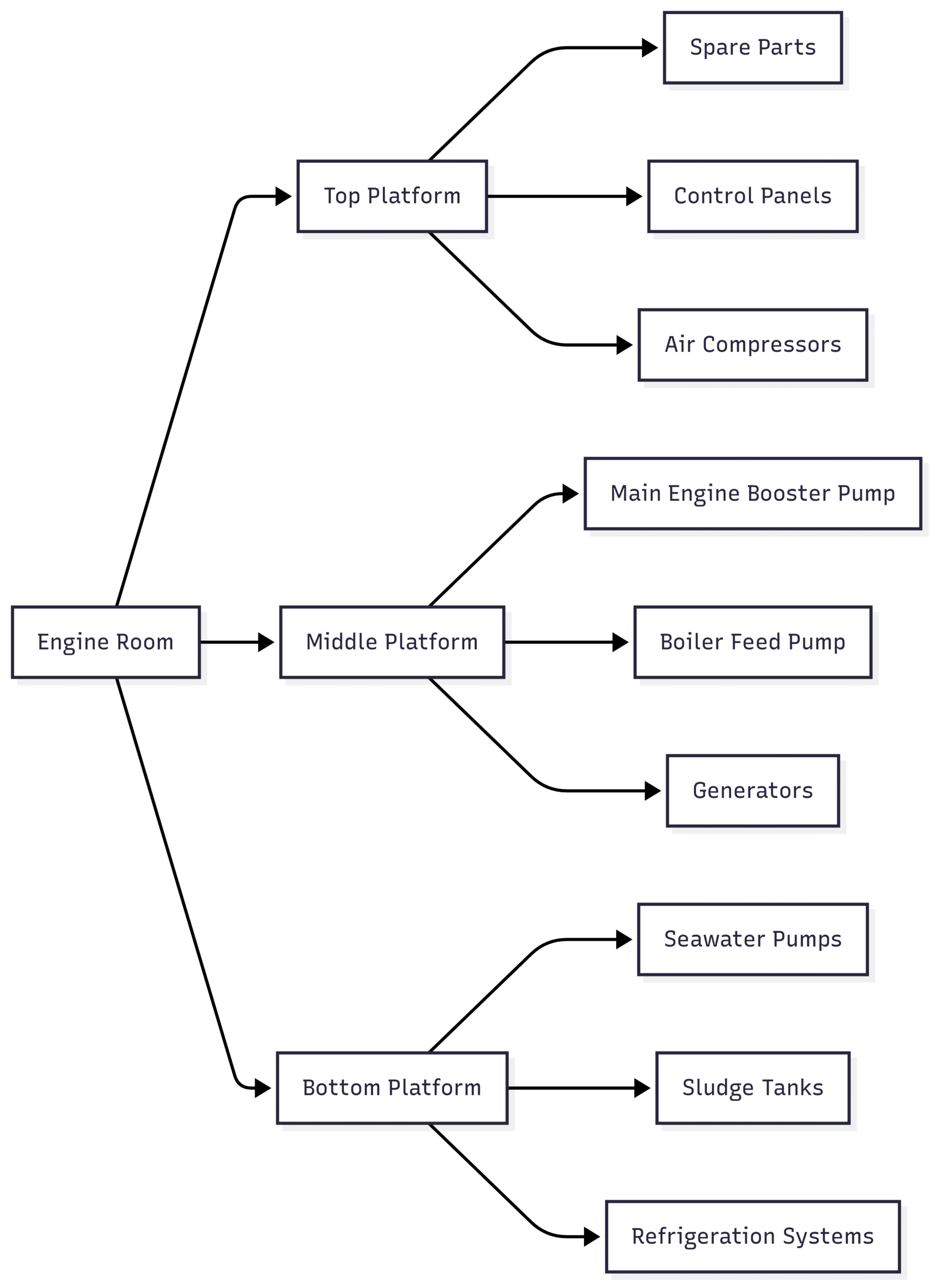
Maintenance and Calibration Tools
While instruments monitor systems, maintenance tools ensure their reliability. Marine engineers rely on a range of tools for diagnostics, calibration, and repairs:
Measuring and Calibration Tools
- Vernier Calipers and Micrometers: Measure piston ring gaps, liner wear, and shaft diameters with precision (±0.01 mm).
- Feeler Gauges: Check valve clearances to ensure proper engine timing.
- Dial Gauges: Assess crankshaft deflection and alignment.
- Cylinder Bore Gauges: Detect wear inside cylinder liners, critical for engine performance.
Portable Monitoring Devices
- Infrared Thermometers: Measure surface temperatures without contact, ideal for quick checks.
- Handheld Vibration Analyzers: Identify shaft misalignment or bearing wear through vibration patterns.
Power Tools
- Impact Wrenches: Deliver high torque for removing engine mounts or propeller nuts.
- Angle Grinders: Used for rust removal and surface preparation.
- Electric Drills: Facilitate component mounting or modifications.
Specialized Tools
- Valve Seat Cutters: Restore valve seating surfaces during overhauls.
- Bearing Pullers: Remove bearings without damaging components.
- Hydraulic Jacks and Chain Hoists: Lift heavy engine parts (up to 10 tons).
Cleaning and Safety Tools
- Degreasers and Industrial Vacuums: Maintain a clean engine room to prevent hazards.
- Personal Protective Equipment (PPE): Includes helmets, gloves, and ear protection.
- Gas Detectors: Monitor for toxic or flammable gases.
Case Study: Fuel Pump Overhaul
On a bulk carrier, engineers used an impact wrench and angle grinder to overhaul a fuel pump, reducing downtime by 30%. Micrometers confirmed component tolerances, ensuring compliance with manufacturer specifications.
The Role of Marine Engineers
The engine room is managed by a dedicated team of marine engineers and crew, led by the Chief Engineer. Responsibilities include:
- System Monitoring: Engineers monitor machinery performance using instruments and ECR displays.
- Maintenance Planning: Schedule routine maintenance to comply with class society rules.
- Fuel Bunkering: Manage fuel transfer from bunkers to ship tanks, typically overseen by the Fourth Engineer.
- Emergency Repairs: Address equipment failures promptly to avoid delays.
Crew ranks vary by country. In the U.S., positions range from Third Assistant Engineer to First Assistant Engineer, while in Canada, they range from Fifth-Class to First-Class Engineer. Unlicensed roles include oilers, electricians, and pumpmen, each contributing to engine room operations.
Why These Instruments and Tools Matter
The instruments and tools in a ship’s engine room are critical for three key reasons:
- Safety: Real-time monitoring prevents hazardous conditions, such as crankcase explosions or boiler failures. Oil mist detectors and alarm systems are lifesavers in this regard.
- Efficiency: Optimized fuel consumption, lubrication, and cooling extend machinery life and reduce operational costs. Flow meters and tachometers play a pivotal role here.
- Compliance: Accurate parameter logs are required under SOLAS, MARPOL, and class society rules. Non-compliance can lead to fines or detention.
FAQs
Are portable measurement tools considered engine room instruments?
Why are oil mist detectors critical?
What’s the role of the ECR in engine instrumentation?
Conclusion
The ship’s engine room is a marvel of engineering, where instruments, machinery, and skilled professionals converge to ensure safe, efficient, and compliant maritime operations. From pressure gauges to oil mist detectors, these instruments provide real-time insights into system performance, while maintenance tools like micrometers and impact wrenches keep equipment in top condition. For aspiring marine engineers and seasoned professionals, mastering these systems is essential for a successful career at sea.
For those seeking opportunities in the maritime industry, platforms like Martide offer a streamlined way to connect with shipowners and apply for engine room roles. Whether you’re a cadet or a Chief Engineer, the engine room remains the heart of every voyage, powering the world’s oceans with precision and expertise.
Happy Boating!
Share Essential Instruments in a Ship’s Engine Room with your friends and leave a comment below with your thoughts.
Read Artificial Intelligence in Predictive Maintenance for Ships until we meet in the next article.
